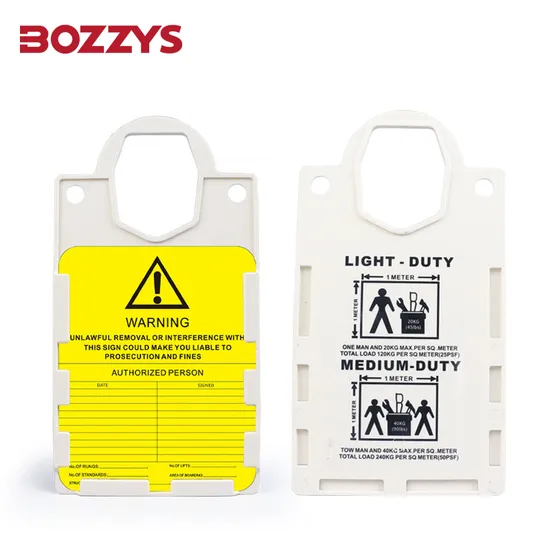Scaffolding is essential for construction projects. It provides safety and access to high areas.
In Saudi Arabia, construction is booming. Understanding how to use scaffolding effectively is crucial. Scaffolding ensures workers can reach heights safely, maintain stability, and complete tasks efficiently. This introduction will guide you through proper scaffolding techniques, regulations, and best practices.
Whether you are a contractor, builder, or construction worker, knowing the right way to use scaffolding can make your projects safer and more productive. Let’s explore the key aspects of scaffolding use in Saudi Arabia’s construction industry.
Introduction To Scaffolding
Scaffolding is crucial in Saudi Arabian construction for worker safety and efficiency. It provides a stable platform for accessing high areas. Proper assembly and regular inspection are essential to prevent accidents and ensure stability.
### Introduction to Scaffolding Scaffolding is a crucial element in the construction world, especially in a rapidly developing country like Saudi Arabia. Whether you’re working on a skyscraper in Riyadh or a new residential project in Jeddah, scaffolding provides the support you need to get the job done safely and efficiently. But what exactly is scaffolding, and why is it so vital in construction?What Is Scaffolding?
Scaffolding is a temporary structure used to support workers and materials during the construction, repair, or maintenance of buildings. It typically consists of steel or aluminum pipes and platforms, strategically placed to provide access to different parts of the building. Imagine the intricate framework you see surrounding high-rise buildings under construction—that’s scaffolding at work. Scaffolding isn’t limited to tall buildings. It can be adapted for any structure, offering flexibility in design and configuration. Whether you’re painting a house or constructing a bridge, scaffolding ensures you can reach every nook and cranny safely. Have you ever noticed how scaffolding seems to wrap around structures like a supportive embrace? That’s its purpose—providing essential access and safety.Importance In Construction
Safety is paramount in construction, and scaffolding plays a key role in ensuring it. Without scaffolding, the risk of accidents and falls increases significantly. In Saudi Arabia, where construction is booming, ensuring worker safety is not just a priority; it’s a necessity. Would you feel comfortable working at great heights without a reliable support system? Beyond safety, scaffolding enhances productivity. By providing easy access to high or hard-to-reach areas, workers can complete tasks more efficiently. This means projects can be completed faster and often with better quality. Think about how much more you can achieve with the right tools and support at your disposal. Scaffolding also helps in maintaining the structural integrity of the building during construction. It supports the materials being used and ensures they are applied correctly. This is crucial in places like Saudi Arabia, where architectural designs often push the boundaries of creativity and innovation. Imagine being part of a project that stands the test of time, thanks to the scaffolding that supported its creation.Types Of Scaffolding
Scaffolding is crucial in construction. In Saudi Arabia, understanding its types is vital. Each type serves different purposes and ensures worker safety. Let’s explore three main types of scaffolding used in the region.
Supported Scaffolds
Supported scaffolds are the most common. They consist of poles, frames, and planks. These structures rest on the ground. Builders use them for exterior work on tall buildings. They provide stability and support for workers. Proper assembly is essential for safety. Supported scaffolds can handle heavy loads. This makes them ideal for tasks requiring many workers and materials.
Suspended Scaffolds
Suspended scaffolds hang from the roof or upper levels. They are perfect for tasks high above ground. Workers use them for cleaning and painting tall buildings. These scaffolds use ropes and pulleys to move up and down. They provide flexibility in height adjustment. Safety harnesses are a must when using suspended scaffolds. This ensures worker safety at great heights.
Rolling Scaffolds
Rolling scaffolds are mobile scaffolds on wheels. They offer great flexibility and convenience. Workers can easily move them across flat surfaces. These scaffolds are ideal for tasks requiring frequent repositioning. Rolling scaffolds save time during construction projects. Locking mechanisms on the wheels ensure stability. This prevents unwanted movement while in use.
Regulations In Saudi Arabia
Saudi Arabia enforces strict scaffolding regulations to ensure safety in construction. Workers must follow guidelines for erecting and dismantling scaffolds. Regular inspections and safety equipment are mandatory.
### Regulations in Saudi Arabia Understanding the regulations for scaffolding in Saudi Arabia is crucial for ensuring safety and compliance in construction projects. Saudi Arabia has specific rules and guidelines that construction companies must follow. This helps to prevent accidents and ensures a safe working environment for all. ###Safety Standards
Saudi Arabia places a high emphasis on safety standards in construction. You need to ensure your scaffolding meets these standards to avoid penalties. All scaffolding must be inspected regularly. This includes checking for stability and any signs of wear and tear. Safety gear such as helmets and harnesses are mandatory. Workers must use them at all times when on scaffolding. ###Legal Requirements
Legal requirements in Saudi Arabia for scaffolding are stringent. Compliance is non-negotiable. You must obtain the necessary permits before setting up scaffolding. These permits ensure that your scaffolding meets all safety regulations. Training is mandatory for all workers. They need to understand how to set up and dismantle scaffolding safely. Non-compliance can lead to severe penalties. This includes fines and potential shutdown of your construction site. Have you ever faced challenges in meeting these regulations? Share your experiences and tips to help others navigate the process.
Credit: pennplan.en.made-in-china.com
Materials Used
Scaffolding is essential in construction projects in Saudi Arabia. It provides safe access to heights, supports workers, and holds materials. Choosing the right materials for scaffolding is crucial for safety and efficiency. In Saudi Arabia, common scaffolding materials include steel, aluminum, and wood. Each material offers unique benefits and suits different construction needs.
Steel Scaffolding
Steel scaffolding is strong and durable. It is ideal for heavy-duty construction work. Steel offers excellent load-bearing capacity. It ensures safety for workers at great heights. Due to its strength, it is used in large-scale projects. Steel scaffolding can withstand harsh weather conditions. It lasts longer and provides stability.
Aluminum Scaffolding
Aluminum scaffolding is lightweight and easy to transport. It is perfect for projects requiring quick assembly. Aluminum is resistant to corrosion, making it suitable for humid environments. It is flexible and can be adjusted to fit different structures. Aluminum scaffolding is popular for short-term projects.
Wood Scaffolding
Wood scaffolding is cost-effective and easy to assemble. It is often used in smaller projects or where resources are limited. Wood provides a stable platform for workers. It can be customized to fit specific project needs. Despite its benefits, wood requires regular maintenance. It is less durable compared to steel and aluminum.
Scaffolding Installation
Scaffolding installation is a critical step in the construction process, particularly in Saudi Arabia where towering structures dominate the skyline. Proper installation ensures safety and efficiency, allowing workers to perform tasks at elevated heights without compromising their security. But what are the essential steps for a seamless installation?
Pre-installation Checks
Before you even think about setting up scaffolding, conducting thorough pre-installation checks is vital. This involves inspecting the site and ensuring it’s stable enough to support the scaffold. Are there any underground utilities that might affect stability? Consider the ground’s capacity to hold the weight of the scaffold and the workers.
Also, check the weather forecast. Wind and rain can impact installation, making it dangerous. Ensure all equipment is free from damage. Missing parts or faulty materials can lead to serious accidents.
Assembling The Scaffold
Assembling the scaffold is like piecing together a giant puzzle. Begin by laying down the base plates and frames, ensuring they are level. This is crucial for stability. Next, add the horizontal and diagonal braces. These braces are key in maintaining the scaffold’s structure.
Follow the manufacturer’s instructions for assembly. Deviating can result in unsafe setups. Have you ever tried to assemble furniture without instructions? It’s frustrating and often ineffective. The same goes for scaffolding.
Securing The Scaffold
Once assembled, securing the scaffold is non-negotiable. Use ties to attach the scaffold to the building. This prevents movement and adds stability. Inspect all connections and ties regularly. They should be tight and secure.
Safety nets and guardrails are your best friends. They provide an additional layer of security for your workers. Would you feel safe walking on a narrow plank without guardrails? Probably not. Ensure the scaffold can withstand environmental factors like wind and debris.
Scaffolding installation isn’t just about putting pieces together; it’s about ensuring safety, stability, and efficiency. What’s your experience with scaffold installation? Share your thoughts and tips in the comments below!
Credit: www.bwint.org
Safety Practices
Using scaffolding safely in Saudi Arabia requires understanding local regulations and guidelines. Ensure scaffolds are stable and secure before use. Always wear protective gear and regularly inspect the scaffolding for any damage.
Ensuring safety in construction is crucial, especially when using scaffolding in Saudi Arabia. Implementing robust safety practices not only protects workers but also enhances project efficiency. Whether you’re an experienced contractor or a newcomer, understanding the key safety components can make a significant difference. Let’s dive into some essential safety practices.Protective Gear
Wearing the right protective gear is non-negotiable. Hard hats, safety harnesses, and non-slip boots should be part of your daily wear. They shield you from falling debris and help maintain balance on the scaffold. Have you ever slipped on a wet scaffold plank? That experience alone is a reminder of why non-slip boots are essential. Consider what other gear you might need for specific tasks. Safety glasses and gloves could prevent injuries when handling materials.Regular Inspections
Regular inspections can save lives. Before starting work, ensure the scaffold is stable and components are intact. A small crack or loose bolt can lead to severe accidents. Have you ever noticed something off during an inspection? Acting promptly to fix it can prevent a potential disaster. Make inspections a daily habit, and encourage your team to report any issues immediately.Emergency Procedures
Do you know what to do in an emergency? Having clear emergency procedures ensures everyone acts quickly and effectively. Regular drills help reinforce these procedures. Remember that time when a colleague fell and chaos ensued because no one knew what to do? That situation highlights the importance of clear protocols. Ensure everyone on site is familiar with emergency exits, first aid kits, and contact numbers for emergency services. Implementing these safety practices can create a safer work environment and enhance productivity. What changes can you make today to improve safety on your site? Encourage your team to prioritize safety and watch as it transforms your project outcomes.Common Challenges
Using scaffolding in construction in Saudi Arabia comes with challenges. These challenges need careful consideration for safe and efficient operations. Weather conditions, load management, and site constraints are significant factors. Each plays a crucial role in the setup and use of scaffolding.
Weather Conditions
Saudi Arabia experiences extreme weather. High temperatures and dust storms are common. Scaffolding must withstand harsh conditions. Ensure materials are durable. Regular inspections are necessary. Weather can affect worker safety. Provide adequate protection for workers.
Load Management
Proper load management is essential. Scaffolding must support construction materials. Overloading can lead to collapse. Calculate load capacity accurately. Use quality materials for strength. Train workers on load limits. Monitoring load stress is crucial.
Site Constraints
Construction sites vary in size and layout. Site constraints influence scaffolding design. Limited space can pose challenges. Assess the site for obstacles. Plan scaffolding placement carefully. Ensure accessibility for workers. Adjust scaffolding to fit site needs.

Credit: www.alamy.com
Training And Certification
Training and certification are vital in construction for safety and efficiency. In Saudi Arabia, these ensure scaffolding workers meet industry standards. Proper training prevents accidents and ensures projects run smoothly.
Required Training
Scaffolding training involves hands-on practice and theory. Workers learn to assemble and dismantle scaffolds safely. Courses cover hazard identification and risk management. Training programs must meet Saudi Arabian regulations.
Certified trainers offer training sessions. They use real-world scenarios to teach practical skills. Workers understand the importance of safety measures and procedures.
Certification Process
Certification is mandatory for scaffolders in Saudi Arabia. It verifies a worker’s competence and adherence to standards. The process includes a written exam and practical assessment.
Exams test knowledge of scaffolding regulations and safety protocols. Practical assessments evaluate skills in scaffold construction and inspection. Certification must be renewed periodically to ensure continued compliance.
Continuous Education
Construction techniques evolve, requiring ongoing education. Continuous education keeps workers updated on new regulations and technologies. Workshops and seminars offer insights into best practices.
Online courses provide flexibility for workers. They can learn at their own pace. Employers encourage continuous learning to improve skills and safety awareness.
Maintenance And Inspection
Maintenance and inspection of scaffolding are crucial in construction. In Saudi Arabia’s challenging climate, regular checks ensure safety and efficiency. Proper maintenance prevents accidents and extends the lifespan of scaffolding systems. Routine inspections guarantee compliance with safety standards, protecting workers and investment.
Routine Checks
Routine checks are vital for scaffolding safety. Inspect scaffolding before every use. Look for rust, loose bolts, and structural damage. Check the stability of the base and ensure all parts are secure. Make sure the scaffold is assembled according to the manufacturer’s guidelines.
Repair Protocols
Repair protocols are essential for maintaining scaffolding integrity. Identify damaged parts immediately. Remove them from use until repaired. Use only certified professionals for repairs. Follow manufacturer specifications for parts and procedures. Do not compromise on safety.
Documentation
Proper documentation keeps track of inspections and repairs. Record every inspection and its findings. Log all repairs and maintenance activities. Maintain a detailed history of each scaffold. This documentation aids in future inspections and compliance checks.
Future Trends
In Saudi Arabia, scaffolding plays a vital role in construction projects. Builders focus on safe scaffolding methods to ensure worker safety and efficiency. Adopting advanced techniques helps adapt to the country’s growing infrastructure needs.
As construction continues to grow in Saudi Arabia, scaffolding remains a critical component. However, the future holds several exciting trends that will shape how scaffolding is used. Let’s look at some of these future trends.Technological Advances
Technology is rapidly changing the construction landscape. Imagine using drones to inspect scaffolding structures. This could save time and enhance safety. 3D printing is another game-changer. It can create custom scaffolding parts quickly. This means less waiting and more building. Software solutions are also on the rise. Programs that design and simulate scaffolding setups can prevent costly errors. Have you tried any of these new tools yet?Sustainable Practices
Sustainability is becoming a priority in Saudi Arabia’s construction sector. Using eco-friendly materials for scaffolding is one way to contribute. Bamboo scaffolding, for instance, is gaining popularity due to its renewable nature. Recycling is another practice on the rise. Companies are now focusing on reusing scaffolding materials. This not only reduces waste but also cuts costs. Are you considering sustainable practices in your projects? They might be beneficial in the long run.Market Outlook
The construction market in Saudi Arabia is expanding rapidly. This growth means more demand for scaffolding. Are you ready to seize these opportunities? New regulations and standards are also being introduced. Staying updated can give you a competitive edge. It’s essential to adapt to these changes to stay ahead. Think about the future. How will you prepare for the evolving market trends? Incorporating these future trends can set you apart. Whether it’s embracing technology or adopting sustainable practices, staying ahead of the curve is crucial. What changes are you planning to make in your scaffolding practices?Frequently Asked Questions
How To Use Scaffolding Step By Step?
1. Inspect the scaffolding for damage. 2. Assemble the base securely. 3. Add platforms and guardrails. 4. Ensure stability with proper bracing. 5. Regularly check for safety compliance.
What Is The Salary Of Scaffolding Engineer In Saudi Arabia?
The salary of a scaffolding engineer in Saudi Arabia ranges between $2,500 to $5,000 per month, depending on experience and qualifications.
What Is The 3 To 1 Rule For Scaffolding?
The 3 to 1 rule for scaffolding means the height of the scaffold should not exceed three times the base width. This ensures stability and safety.
How Is Scaffolding Used In Construction?
Scaffolding provides temporary support for workers and materials during construction. It ensures safety and accessibility at various heights.
Conclusion
Scaffolding is crucial in Saudi Arabia’s construction projects. Following safety standards ensures worker protection. Proper setup and maintenance prevent accidents. Training workers on scaffolding use is essential. Regular inspections identify potential hazards. Adopting these practices boosts efficiency and safety. The right scaffolding techniques lead to successful construction projects.
Keep learning and stay informed for best results.


